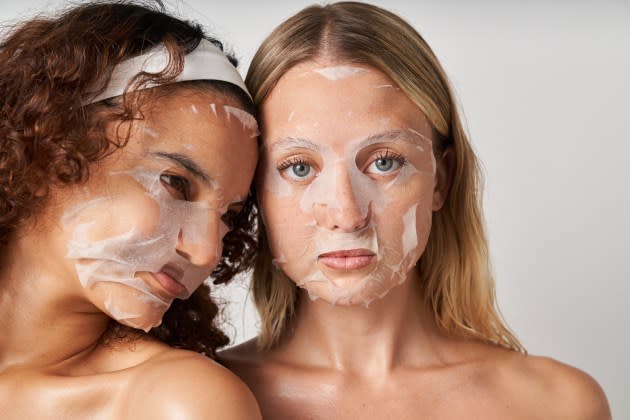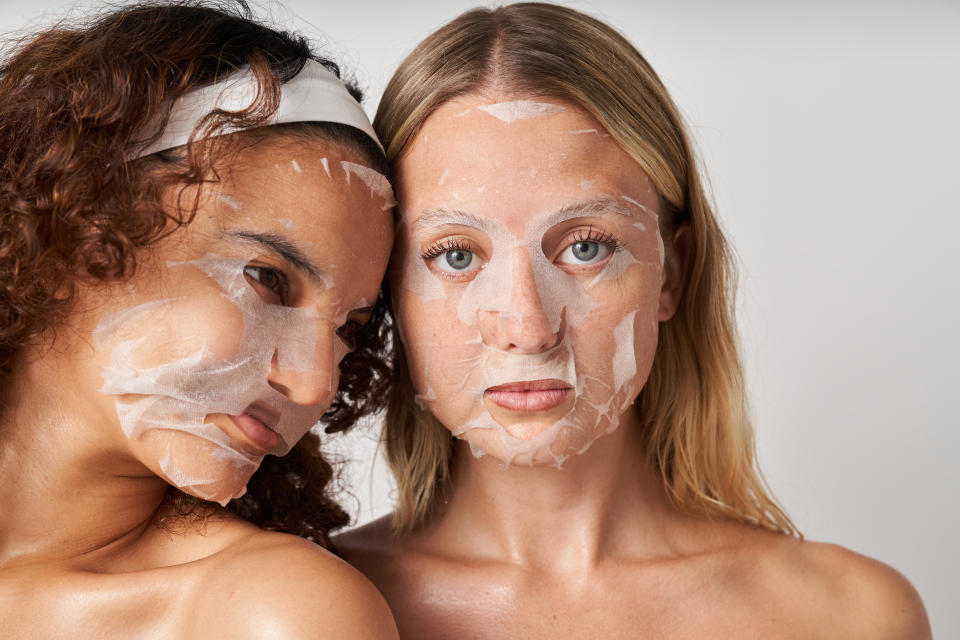How Conserving Beauty Is Pioneering Water-free Cosmetics That Support Conservation Efforts

Water is the source of all beauty, and Conserving Beauty has made its preservation central to its ethos.
This focus on water conservation is particularly pertinent in the beauty industry, where products often contain significant amounts of water, typically ranging from 60 to 85 percent, according to the International Natural and Organic Cosmetics Association (Natrue). In fact, as global water scarcity intensifies, there is a growing push for mindful water usage across all sectors, including cosmetics.
More from WWD
Recognizing the critical need for sustainability, water is increasingly seen as a precious resource. This awareness is driving consumers to seek out water-free cosmetic alternatives that support conservation efforts, Paula Gómez de Tejada, communications officer at Natrue, told WWD.
In response to the rising demand for sustainable beauty solutions, Natassia Nicolao, founder and CEO of Australian-based beauty brand Conserving Beauty, has pioneered an approach that merges sustainability with skin care. Her goal is to ensure that consumers no longer have to choose between “conserving our beauty and the planet’s.”
“Since I was young, I was obsessed with social impact and sustainability,” Nicolao told WWD. “I always imagined that one day I would create something that could positively impact people and the planet.”
This passion followed Nicolao into college, and, after graduating in 2015 with a Bachelor of Science in biochemistry, she went to work in the beauty and wellness industry.
“It was there I became heavily invested in product development, supply chain and sustainable sourcing and learned [firsthand] how heavily the industry relies on water,” Nicolao said. “After that, I knew I would create my own product one day that was the perfect mix of science, innovation and sustainability. From there, Conserving Beauty [was born].”
Founded in 2021, Conserving Beauty has earned a reputation as a leader in beauty innovation in Australia, thanks to Nicolao’s waterless formulation approach and dissolving skin care technologies. A prime example is InstaMelt, developed in collaboration with McCormack’s Innovation.
McCormack’s Innovation, based in Scotland, had previously developed a patented fabric designed for the medical industry, particularly benefiting burn victims. Inspired by this “medical breakthrough,” Nicolao began exploring sustainable methods to replicate the fabric for her face wipes, sheet masks and under-eye masks.

“The process of dressing a wound can be labor-intensive and painful, often generating significant waste. The idea behind McCormack’s fabric was to create something that could reduce the time needed for burn victims to have their dressings changed, without leaving microplastics or other waste behind,” Nicolao explained. “In my journey to develop sustainable, waterless beauty products, I began collaborating with McCormack [around 2021] to adapt their fabric for my formulations. This led to the formation of a joint venture partnership and the creation of InstaMelt.”
Now, InstaMelt is used in several Conserving Beauty products, like the Day Dissolver Wipes, a two-in-one oil cleanser and makeup remover. These wipes effectively remove all traces of makeup and SPF while “moisturizing and protecting” the skin barrier. After use, they dissolve instantly in water or biodegrade within 14 days.
The innovative technology is also featured in micellar oil cleansing wipes, a product created in partnership with Fig.1 Beauty, an affordable skin care brand.
“Partnering with the Conserving Beauty team to bring the InstaMelt technology to the U.S. market was a no-brainer,” Diana Markman, general manager at Fig.1 Beauty, told WWD. “We were already big fans of their dissolvable makeup wipes, [so] infusing them with our own Micellar Oil Cleanser was truly a dream collaboration.”
Building on the success of InstaMelt, Conserving Beauty introduced nanoDOTE earlier this year, a dissolving technology rooted in the manufacturing process.
NanoDOTE is primarily used for the brand’s dissolving zit strips, which retail for $22. These zit strips deliver a “highly targeted delivery” of active ingredients, including salicylic acid, hyaluronic acid and niacinamide, which deeply penetrate the skin to help reduce the appearance of blemishes. The product also helps prevent future breakouts.
“NanoDOTE technology electro-spins active ingredients into small molecular size to penetrate one’s skin deeper and faster than standard creams and patches,” Nicolao said. “So, instead of a fabric that you dispose of after one use, you’re dissolving this product into your skin, providing a plastic-free approach to tackling zits.”
Eco-conscious collabs
While Conserving Beauty has made strides independently, partnering with other like-minded companies has helped advance its sustainability efforts.
For instance, in its ongoing commitment to reducing its carbon footprint, the brand partnered with Bluebird Climate in 2023, a software platform that helps brands assess, improve and transparently communicate their products’ environmental performance.
Bluebird’s emissions tracking tool calculates the footprint of each Conserving Beauty product using the Greenhouse Gas Protocol. This “comprehensive approach” considers emissions from materials, ingredients, manufacturing, transportation and distribution.
Taking its transparency initiatives one step further, Conserving Beauty also partners with Provenance, a leader in sustainability marketing technology, to support its sustainability claims. By utilizing Provenance’s platform, customers can “shop confidently” in alignment with their sustainable values.
“From our own research, we know that 90 percent of beauty customers consider sustainability when buying products,” Jessi Baker, founder and CEO of Provenance, told WWD. “We help brands like Conserving Beauty credibly showcase their sustainability initiatives. By sharing Provenance-powered facts on their product pages, Conserving Beauty can show their customers the product’s sustainability claims at a glance, and by clicking on specific claims or certifications, those customers can actually see the evidence or third-party verification.”
In addition to its technological partnerships, Conserving Beauty also collaborates with the Water Footprint Network, the research service’s first global beauty partner. Together, they are conducting a custom research project — scheduled for publication later this year — that will detail the water savings achieved by each Conserving Beauty product.
“We partnered with the Water Footprint Network, an incredible institution in the Netherlands known for its work in agriculture and textiles. Convincing them to venture into beauty was challenging since they’d never done it before, but I assured them that our entire supply chain, including farms and raw material suppliers, would cooperate,” Nicolao said. “We’ve been meticulously mapping our water footprint since [our inception], and although the research has taken longer than expected, we plan to publish our findings by the end of this year. What I can say now is that the savings are significant, equating to thousands of liters. We’re very excited to share the exact amount saved through our products soon.”
Best of WWD

